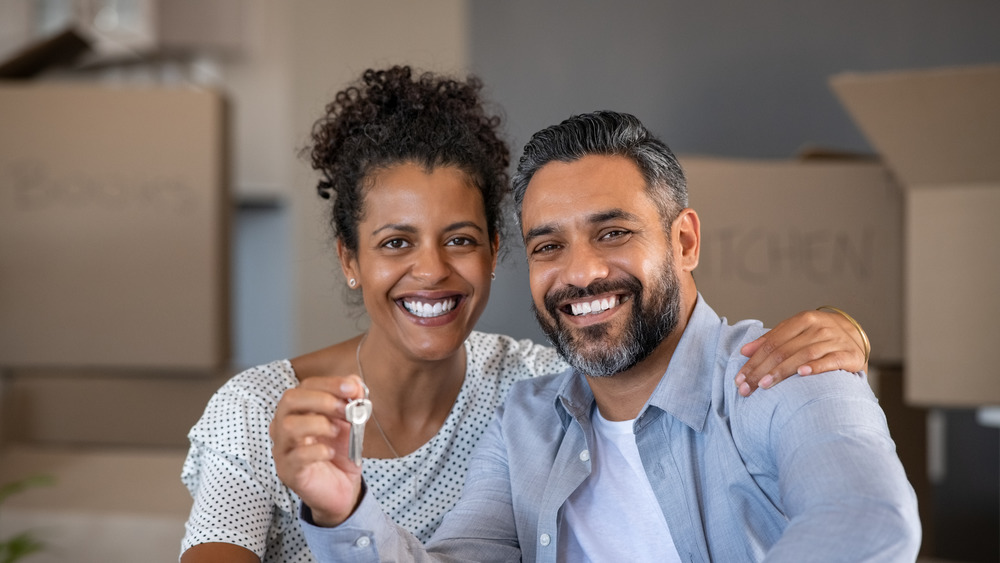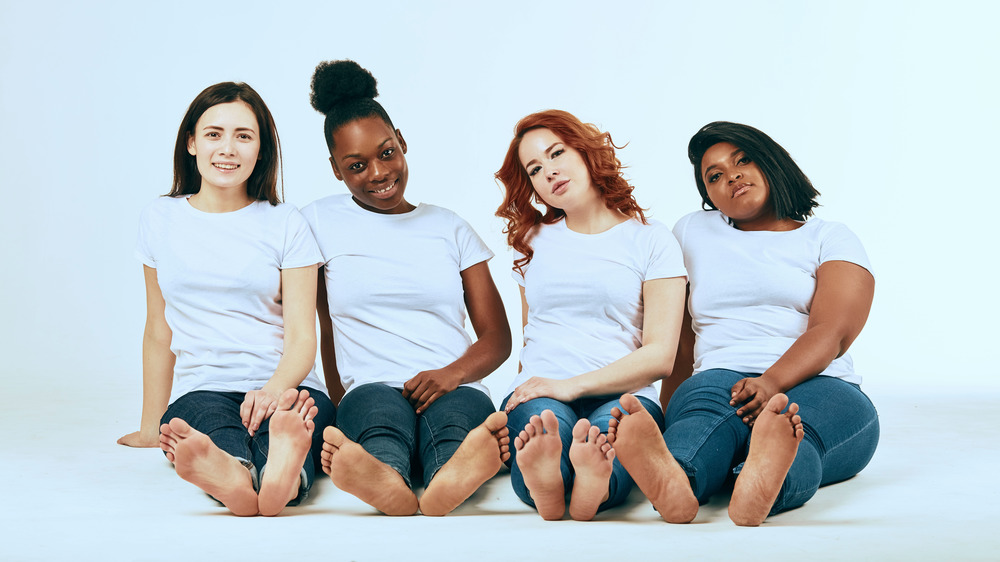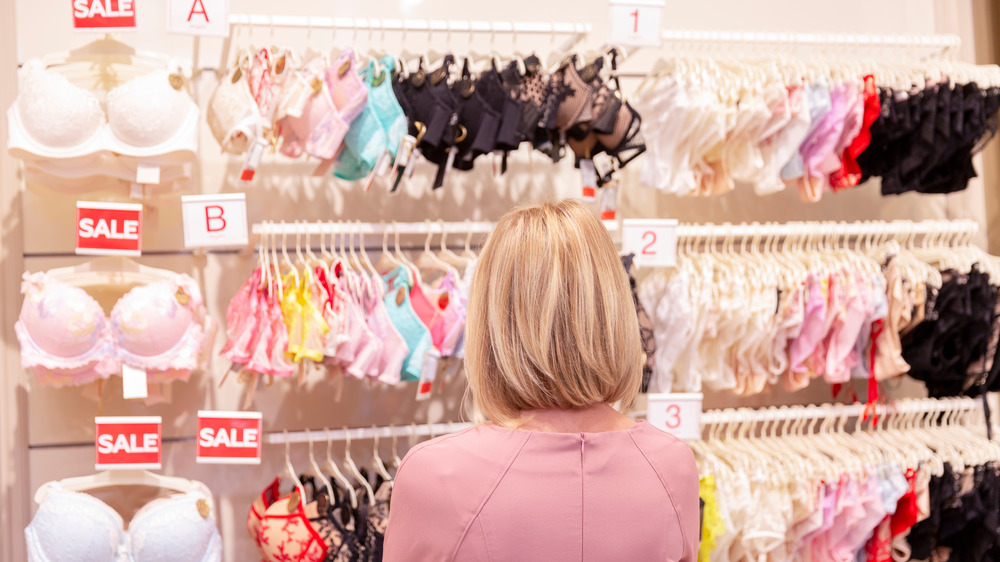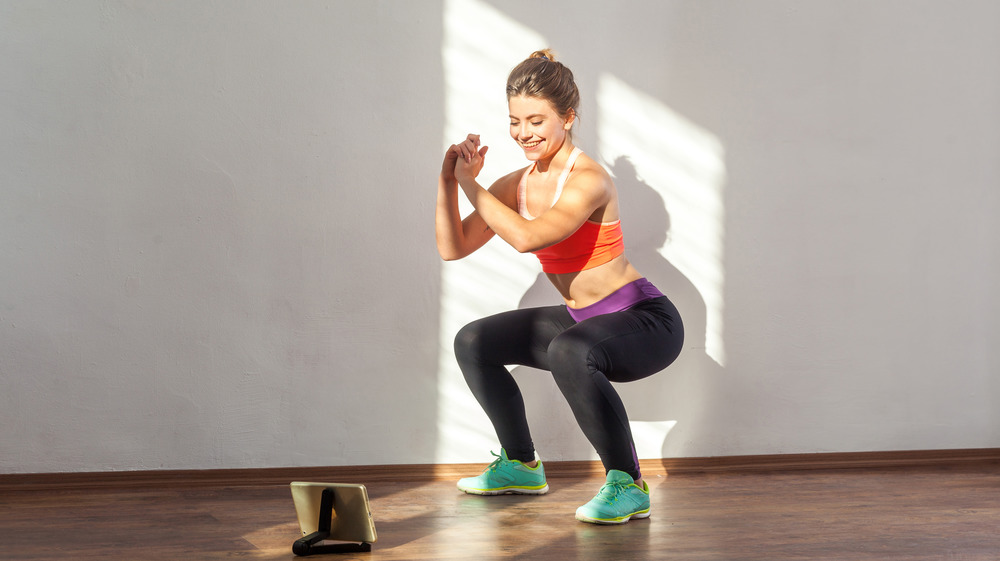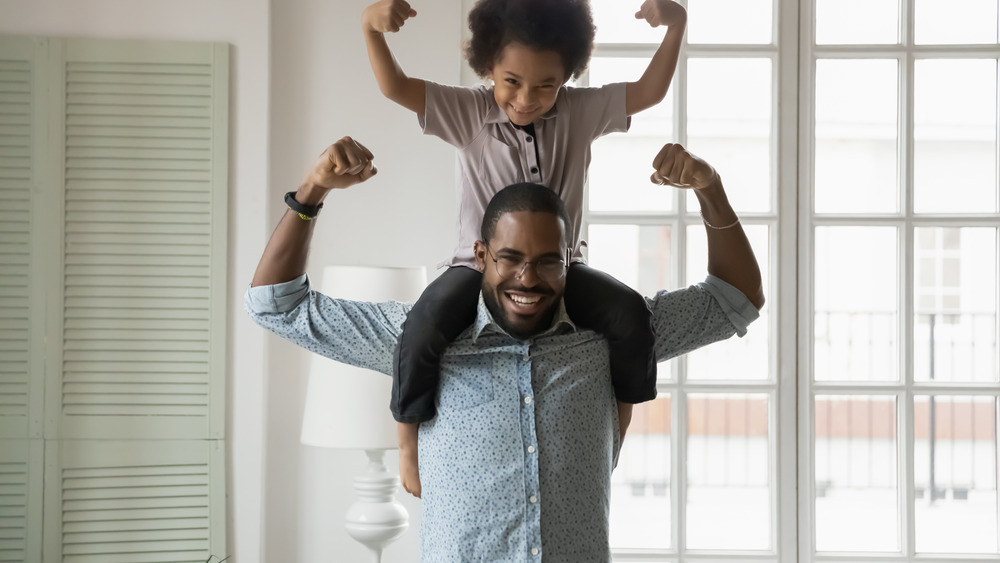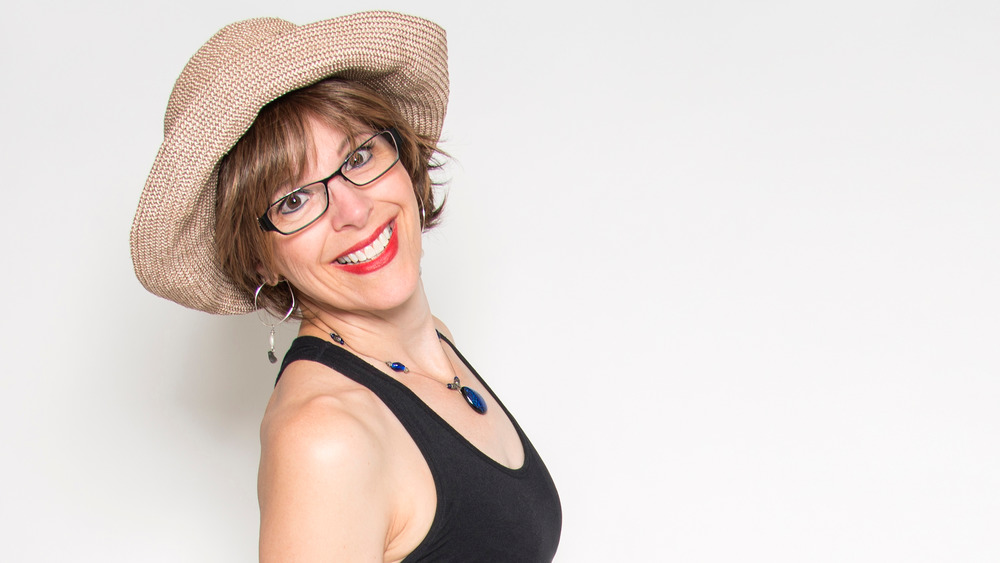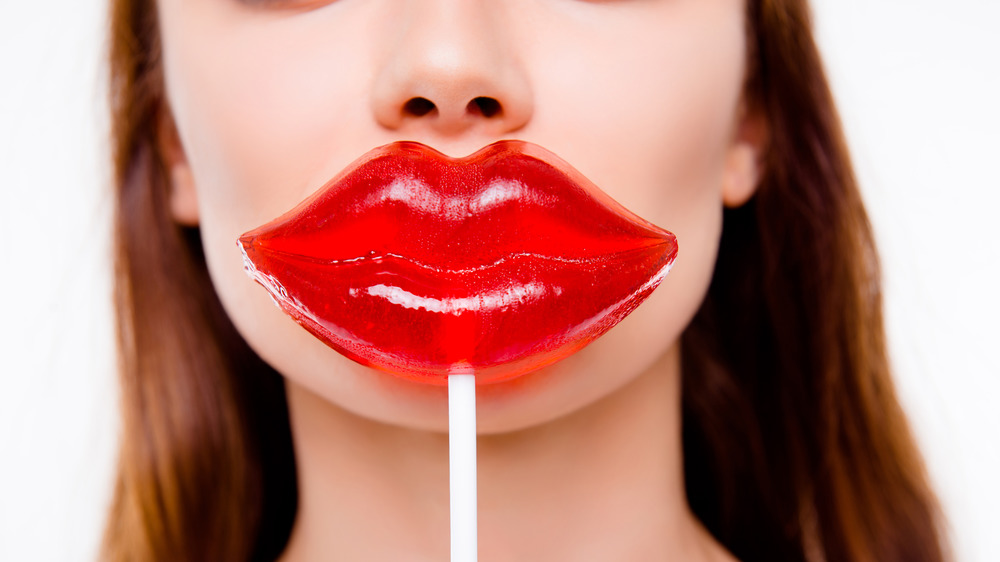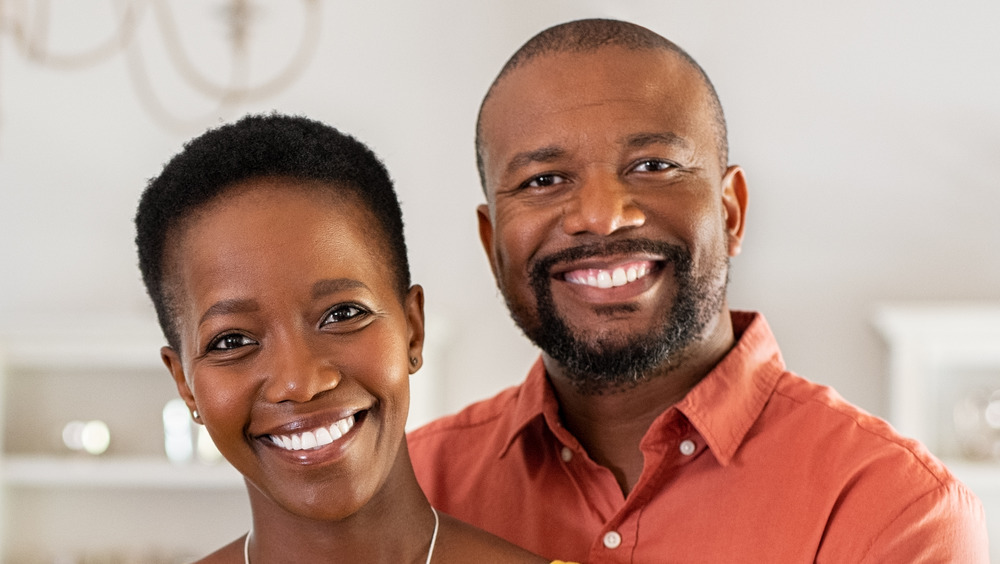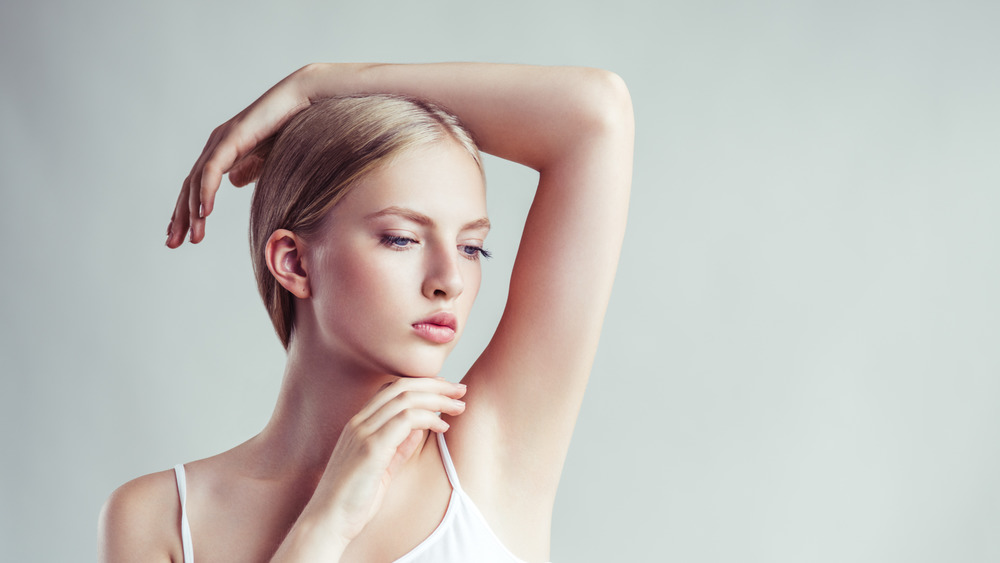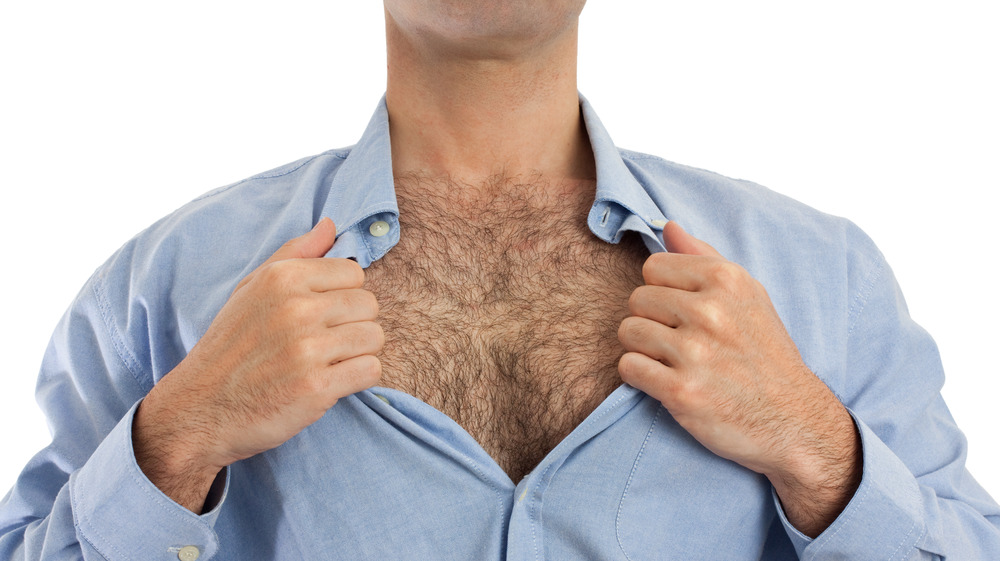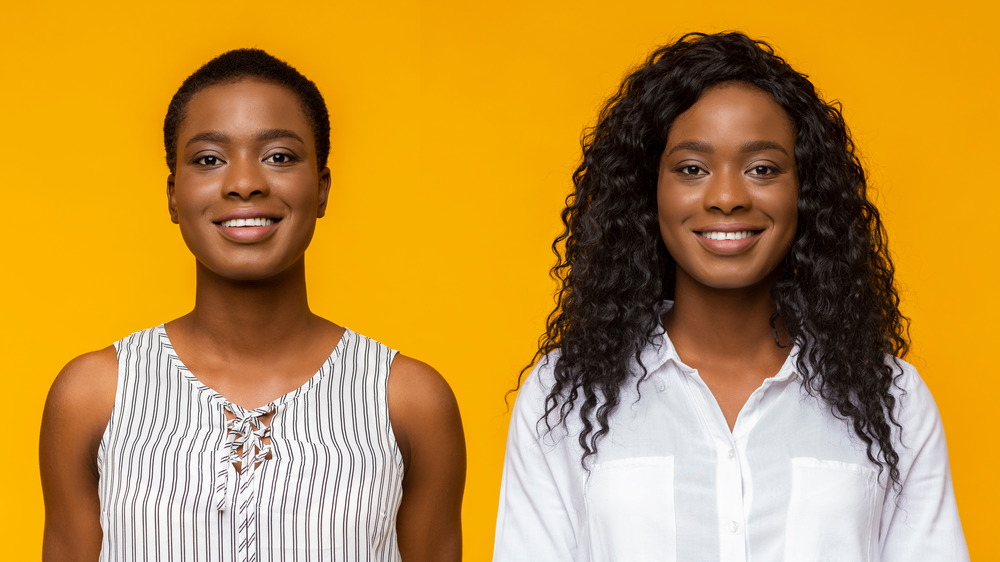Surprising Physical Traits That Are Attractive To Americans
Physical attractiveness is partially primal, but culture exerts a heavy influence, according to licensed clinical social worker and psychotherapist Judy Scheel, writing for Psychology Today. For example, although a deeply engrained drive to procreate may be behind the fact that men find women more attractive during the fertile phase of their menstrual cycle, as a 2004 study highlighted, the media managed to create a moment in the 1990s when the frail (and presumably infertile) "heroin chic" look became synonymous with attractiveness.
Yes, as attractiveness is not purely primal, different cultures and countries have differing ideas about what is attractive. If you're from Denmark, you might be shocked to see someone with a facial tattoo, whereas in New Zealand you might find it appealing. While looking tan is a national obsession in Australia, pale skin is in in many parts of Asia. Likewise, what we as Americans find attractive might not be even remotely attractive to various other cultures. Here are the surprising physical traits that Americans find attractive.
Relative youthfulness is viewed differently by men than women
Scientists have long believed that humans have an unconscious drive to partner with members of the opposite sex who, based on physical appearance, appear most likely to help them bring offspring into the world (via Live Science). Accordingly, a team of scientists out of Western Illinois University hypothesized that both men and women would find members of the opposite sex who appear to be youthful to be more attractive than members of the opposite sex who appear to be older.
As it turned out, the scientists were right and wrong. The research, the results of which were published in the Journal of Social Psychology, revealed that heterosexual American women (at least those with an average age of 40) weren't swayed by the perceived ages of the men they rated as more or less attractive. By contrast, a significant preference for younger-looking women was observed in heterosexual American men (average age: 40).
Attractive female body size is subjective in the United States
Being "plump" was considered pleasing in the early 1800s, but by the 1860s, the pressure to be thin was on (via Live Science). The pendulum has swung back and forth over the decades, but in recent years, it seems there's been a premium placed on being thin in America. The question becomes: Just how thin? Moreover, does the standard change based on gender? How about other demographic factors?
A 1990 study out of the University of New Mexico and published in the journal Sex Roles found that men put a great deal of emphasis on "thinness" in determining which women they find attractive. Decades later, a 2020 study published in the same journal found that American women tended to overestimate just how thin American men prefer them to be. And a 2020 survey of 2,000 men by dating site Badoo indicated a strong preference for women with at least a moderate amount of flesh on their bones (via Your Tango).
American men and women share an opinion on bust size
If you ask a woman her bra size, there are only two possible answers: too small or too big – or so goes the joke. But many a truth has been said in jest. Indeed, when the plastic surgeons at ZavaMed surveyed 1,000 Americans and 1,000 Europeans on what they thought was the ideal breast size, they discovered that most prefer breasts that are neither too small nor too big, but right in the middle.
If given the choice of either small or large, men and women showed a preference for larger; 31 percent of women and 35 percent of men said a larger bust was more attractive, whereas only 9 percent of women and 11 percent of men would prefer a smaller bust. And by the way, men: Apparently, your breast size matters too. At least you think it does.
According to the American Society of Plastic Surgeons, over 24,000 men had breast reduction surgery in 2019. And every year, a small handful of men have surgery to enhance the appearance of their own breasts via pectoral implants.
American men like women to have at least the illusion of a sizable tush
According to the American Society of Plastic Surgeons (ASPS), 970 women pursued buttock implants and 4,453 had a butt lift in 2019. While butt enhancements are not even close to the most popular plastic surgery for women (that would be breast augmentation, which was performed nearly 300,000 times in 2019), butt lifts are on the rise. Since the year 2000, this procedure has seen a 215 percent increase, according to the ASPS.
However, the preference for curvier female rear ends dates back to prehistoric times, according to a 2016 study published in the Journal of the American Society of Plastic Surgeons, which posited that a woman with a more pronounced bottom would appear to be more capable of carrying multiple pregnancies to term (via UT News). The study revealed that it's not necessarily the size of the buttocks so much as whether the lumbar curve — the angle from back to buttocks — is sharp enough to offer the appearance of a sizable booty, with the ideal being 45.5 degrees.
The ideal size for a male American body varies
The fitness professionals at Treadmill Reviews asked 1,000 Americans to describe their ideal body type for the gender to whom they are most attracted to. The results of their survey revealed that the ideal American man (standing at 6 feet tall and weighing 187 pounds) is three inches taller and 10 pounds lighter than the average American man. That doesn't mean the ideal American male is at an ideal weight, however. According to the National Institutes of Health, both the ideal and the average American male have BMIs that put them in the overweight category.
Additionally, it turns out that preferences vary by generation. Among millennials, the ideal American male stands 6 feet tall, weighs 186 pounds, and has a 40-inch chest and a 33-inch waist. For Gen Xers, the ideal American man is 6 feet tall and weighs 192 pounds and has a 41-inch chest and a 33-inch waste. And lastly, among Baby Boomers, the ideal man is six feet tall and 190 pounds — but with a 42-inch chest and a 32-inch waist.
Many people in America find the dad bod attractive
When the fitness pros at Treadmill Reviews asked 1,000 Americans to describe their ideal male body, it was found that Gen Xers (people born between 1965 and 1980) prefer their men a bit beefier than both younger and older generations. To put it another way: The middle-aged folks not only appreciate a "dad bod," but go so far as to rate it as more attractive than slimmer, fitter physiques.
Indeed, an online survey of about 2,000 Americans adults conducted in 2017 by Kelton on behalf of Planet Fitness found that 69 percent of women prefer a man who's sporting anywhere from a few to 20 extra pounds. Seventy-eight percent of the women surveyed believe men with dad bods are "confident in their own skin," and 83 percent of the women who are mothers said they would be "proud" to have a husband with a "dad bod."
The ideal size for a female American body is a tall (and skinny) order
In a survey of 1,000 Americans conducted by Treadmill Reviews, the ideal female body (according to the men and women who are more sexually attracted to women than men) stands at 5 feet, 5 inches, weighs about 130 pounds, and has a waist that measures 26 inches. To offer some perspective, that's about an inch taller and 40 pounds lighter than the average American female, with a waist that is more than 12 inches smaller.
If you think that's a tall (and skinny) order for women to have to meet, you should know the Baby Boomer standard for the "ideal" female body is even more exacting than the standard ascribed by Millennials and Gen Xers. Standing at 5 feet, 5 inches tall, the Boomer's ideal woman weighs 121 pounds and has a 25-inch waist. And this is despite the fact that weight and waist size tend to increase with age, as a 2004 study in American Journal of Epidemiology found.
The preference for masculine facial features varies by state
It's long been known that a deeply engrained survival-based drive to propagate the species drives perceptions of attractiveness, as a 2004 study in Proceedings of the Royal Society B: Biological Sciences highlighted. For example, heterosexual men tend to prefer women with an hourglass silhouette over women with a less pronounced waist-to-hip curve because an hourglass body shape suggests levels of estrogen that are consistent with higher fertility (via Vox).
However, culture and other realities of modern life come into play as well. Accordingly, heterosexual American women don't necessarily gravitate toward the most "manly" men (i.e., men who have pronounced testosterone-driven facial characteristics such as a large jaw, a prominent brow, and thick facial hair), a 2019 study found.
For example, in countries like the United States. where the health and economic conditions are favorable to men living longer lives, facial masculinity was considered less important to women in assessing the attractiveness of potential male partners, the study, which was published in Scientific Reports, revealed. In fact, it was noted that women in states where health conditions are less favorable tended to show a more pronounced preference for more masculine-looking male partners.
Feminine traits in women are considered attractive in the U.S.
Scientists say that large eyes, a small nose, and a small chin are "feminine" traits. That is because these traits are influenced by levels of female hormones, with higher levels associated with more "feminine traits," according to Medical News Today. For the average heterosexual American male, "feminine" appears to be interchangeable with the word "attractive," according to a study published in the Journal of Personal and Social Psychology.
As part of the study, 75 male undergraduates were shown photos of 50 females. Overwhelmingly, the young men rated the women possessing more feminine physical traits to be more attractive. And since emotional expressiveness is seen as a feminine trait in the U.S., according to Psychology Today, it would stand to reason that the college-age men in this study also preferred the female faces that appeared to be more emotionally expressive, such as those with high eyebrows, large pupils and a big smile. In fact, that is precisely what the data showed.
Lip augmentations are on the rise in the United States, but many find natural lips most attractive
It might appear from our Instagram feeds that Americans covet lush lips and will go to great lengths to make their own lips appear more luscious, including lip augmentation. In fact, according to the American Society of Plastic Surgeons, 31,789 lip augmentations were performed in the U.S. in 2019, up from 18,589 in the year 2000. By contrast, lip reduction was performed only 1,170 times in 2019. Although more people than ever may be getting lip fillers, that doesn't necessarily mean plump lips are the gold standard of attractiveness.
In fact, a 2019 study published in the journal Archives of Plastic Surgery found that natural lips were preferable to augmented lips among Americans, although it can't be discounted that the study skewed toward highly educated, middle-aged white females (93 percent of the people studied were college educated, 84 percent were females, 80 percent were white, and the average age was 47).
Straight, white teeth are basically everything in America
When it comes to assessing attractiveness, Americans place a great deal of value on having straight, white teeth, according to a 2012 survey by Kelton Research. This is certainly not true of every culture or country, however. For example, Japanese culture places such a high value on an adorably crooked smile; some Japanese people are willing to pay to create the look, according to Toothology.
A 2015 study published in the journal Sociology of Health and Fitness took a deep dive into why it is that Americans care so much about "good teeth" and found that straight, white teeth tend to be associated with better health, higher levels of education, and a higher socio-economic bracket. In fact, "modified teeth" (teeth that have been cosmetically enhanced through capping, whitening, orthodontia, or otherwise) were found to be associated with identity, social structure, and social class. And as the study explained, "An improved smile is not only linked to enhanced confidence and self‐esteem, but may possibly be associated with employment opportunities."
Americans tend to prefer women to have clean-shaven armpits and legs
The American "feminine" ideal tends toward bald legs and underarms, sociologist Jane Pilcher explained in an article on her website. That being said, women having clean-shaven legs and armpits is a relatively new phenomenon, according to The Atlantic, which noted that American women couldn't be bothered with hair removal prior to the late 19th century to early 20th century.
In fact, the shaving of female armpit hair was practically unheard of prior to 1915, when the first sleeveless dress was presented as American fashion, and Harper's Bazaar proclaimed that this look could not be worn without clean-shaven pits, according to the hair removal specialists at LaserAway.
Although the pendulum swung briefly the other way in the 1960s and 1970s, when some women began to reclaim their body hair, for the most part Americans continue to view hairless legs and arms as signals of attractiveness in women.
What American women really think of chest hair
According to Rebecca Herzig' book, Plucked: A History of Hair Removal, "18th-century naturalists and explorers considered hair-free skin to be a strange obsession of indigenous peoples" (via The Atlantic). But times have changed over the past four centuries.
More and more American men are grooming their body hair, and it looks as if the trend may continue for years to come, according to a report by Inkwood Research. This may reflect the fact that overt signs of masculinity are not necessarily highly valued in American culture, as a 2019 study published in Scientific Reports explained. But is a clean-shaven chest something American women desire?
In a nationwide survey of over 300 American women conducted by Prim and Prep, a website devoted to all aspects of male grooming, 60 percent of the women expressed a preference for a "medium" amount of chest hair. On the other hand, the preference for chest hair versus a clean-shaven chest appears to be somewhat age-dependent. Women aged 18 to 24 and 35 to 44 were 51 percent more likely to prefer a clean-shaven chest compared to women aged 25 to 34.
Long hair on American women is preferred over short
Women who cut their hair short are often viewed differently than those who keep their hair long. "Longer hair connotes femininity with its associations of passivity and eagerness to please," Dr. Alexander Edmonds, a professor of social anthropology at the University of Edinburgh, told Refinery29. Indeed, longer hair is thought of as conventional, while shorter hair bucks societal norms. But does that mean that Americans find women with long hair to be more attractive than women with short hair? Not exactly.
What long hair appears to signify, according to Psychology Today''s 2016 review of a number of studies addressing the issue, has actually little to do with attractiveness but a lot to do with status and personality, with short hair giving the woman wearing it a look of self-determination and long hair giving its wearers an aura of robust health. Additionally, a 2004 study published in the journal Human Nature found that long hair may also signify economic prosperity (on the theory that who else can afford the upkeep except those with money?).


